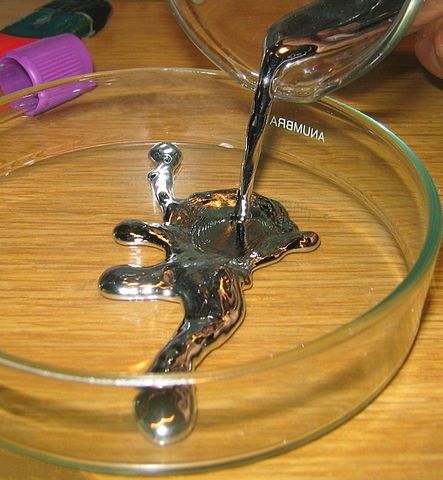Table of Contents
Thermometry
Thermometry (Aka. temperature measurement) is essential to a wide range of activities, including manufacturing, scientific research, and medical practice. The ability to measure temperature accurately was only developed recently.
- Temperature (like mass, length, time) is a chosen fundamental quantity. Therefore, arbitrarily chosen units (such as degrees Celsius, degrees Fahrenheit or Kelvin) are used to measure temperature.
- Temperature is measured quantitatively by constructing a thermometer which makes use of a physical property of matter that varies continuously with temperature – thermometric property.
For accurate readings, thermometer must be much smaller than the system, so that the energy the thermometer gains or loses does not significantly alter the energy content of the system.
Thermometer can be calibrated by placing them in thermal contact with environments that remain at constant temperature. Eg. Pure melting ice(0°C) and pure boiling water (100°C) at 1 ATM.
Fun Fact:
Galileo invented the first thermometer. In his instrument, the changing temperature of an inverted glass vessel produced the expansion or contraction of the air within it, which in turn changed the level of the liquid with which the vessel’s long, open-mouthed neck was partially filled. This general principle was perfected in succeeding years by experimenting with liquids such as mercury and by providing a scale to measure the expansion and contraction brought about in such liquids by rising and falling temperature.
Thermometric Property
An instrument, a thermometer, is required to measure temperature objectively. The thermometer makes use of a physical property of a thermometric substance which changes continuously with temperature. The physical property is referred to as thermometric property.
Thermometric Properties Used In Various Thermometers
The following table shows some of the thermometric properties of matter that are used in the various thermometers:
| Thermometric Property | Thermometer |
|---|---|
| Volume expansion of a gas | Gas thermometer |
| Volume expansion of a liquid | Laboratory or clinical thermometer |
| Volume expansion of a solid | Bi-metallic strip thermometer |
| Pressure change of a fixed mass of gas | Constant – volume gas thermometer |
| Changes in e.m.f. | Thermocouple |
| Changes in electrical resistance | Resistance thermometer or thermistor |
Note: You can visit UY1: Measurement Of Temperature for a in-depth review of the different types of thermometers.
A good thermometric property of matter should vary:
- continuously with temperature
- uniquely over the the range of temperature to be measured
- its variation should be measurable.
Volume As Thermometric Property
Most solids or liquids or gases expand and contract their volume when the temperature around them changes.
Mercury is the only elemental metal that is liquid at ordinary temperatures. Mercury is silvery white and freezes into a soft solid like tin or lead at about -39 °C. Mercury does not wet glass or cling to it, and this property, coupled with its uniform volume expansion throughout its liquid range, makes it useful in liquid-in-glass thermometers.
Gases such as nitrogen or simply air are also suitable substances for use in volumetric gas thermometers. Typically, these gas thermometers work best at measuring very low temperatures.
Solid strips of different materials such as copper and aluminum can be made to stick together (bi-metallic strip). When the temperature of its surroundings changes, the different materials expand at different amounts, causing the bimetallic strip to bend, providing an indication to the change in temperature.
Advantages & Disadvantages Of Mercury As Thermometric Substance
| Advantages | Disadvantages |
|---|---|
| It is a good conductor of heat (High thermal conductivity) | Poisonous |
| Does not wet (cling to the sides) of the tube | Small thermal expansion |
| High boiling point ($357^{\circ}\text{C}$) | Expensive |
| Uniform expansion | High freezing point, $-39^{\circ}\text{C}$ (Cannot be used in places that are very cold) |
| Respond quickly to temperature changes | |
| Visible meniscus |
Advantages & Disadvantages Of Alcohol As Thermometric Substance
| Advantages | Disadvantages |
|---|---|
| Safe liquid | Wets the tube |
| Low freezing point ($-115^{\circ}\text{C}$) | Low boiling point ($78^{\circ}\text{C}$) |
| Large expansivity | Does not react quickly to temperature changes |
| Cheap | Needs to be dyed since it is colourless |
| Non-uniform expansion |
Advantages & Disadvantages Of Using Mercury Or Alcohol In Thermometers
| Mercury | Alcohol |
|---|---|
| Silver | Colourless, usually dyed red |
| High thermal conductivity (Can respond very quickly to temperature changes) | Low thermal conductivity (Takes a longer time to reach its surrounding temperature) |
| Uniform expansion | Non-uniform expansion |
| Does not wet glass | Wets glass |
| Poisonous liquid | Safe liquid |
| Expensive | Cheap |
| Very dense liquid | Less dense liquid |
| Small thermal expansion (Scale markings on stem are very close to one another Hard to read) | Large thermal expansion (Scale marking on stem are far apart Easy to read) |
Problem With Centigrade Thermometer
- Unable to give accurate readings.
- Assumption that all physical properties vary linearly with temperature is not always true. E.g. mercury and alcohol have different thermal expansion properties which cause them to display different readings in the same temperature.
Solution: Temperature scale independent of the physical properties of any substances $\rightarrow$ Thermodynamic scale (absolute temperature scale) $\rightarrow$ Gas thermometer (constant-volume thermometer)
Temperature readings are nearly independent of the type of the gas used when gas pressure is low and temperature is high.
Pressure of gas varies linearly with temperature.
Pressure extrapolates to zero when temperature is -273.15°C.(Absolute zero) $\rightarrow$ all particle motion cease (minimum internal energy).

